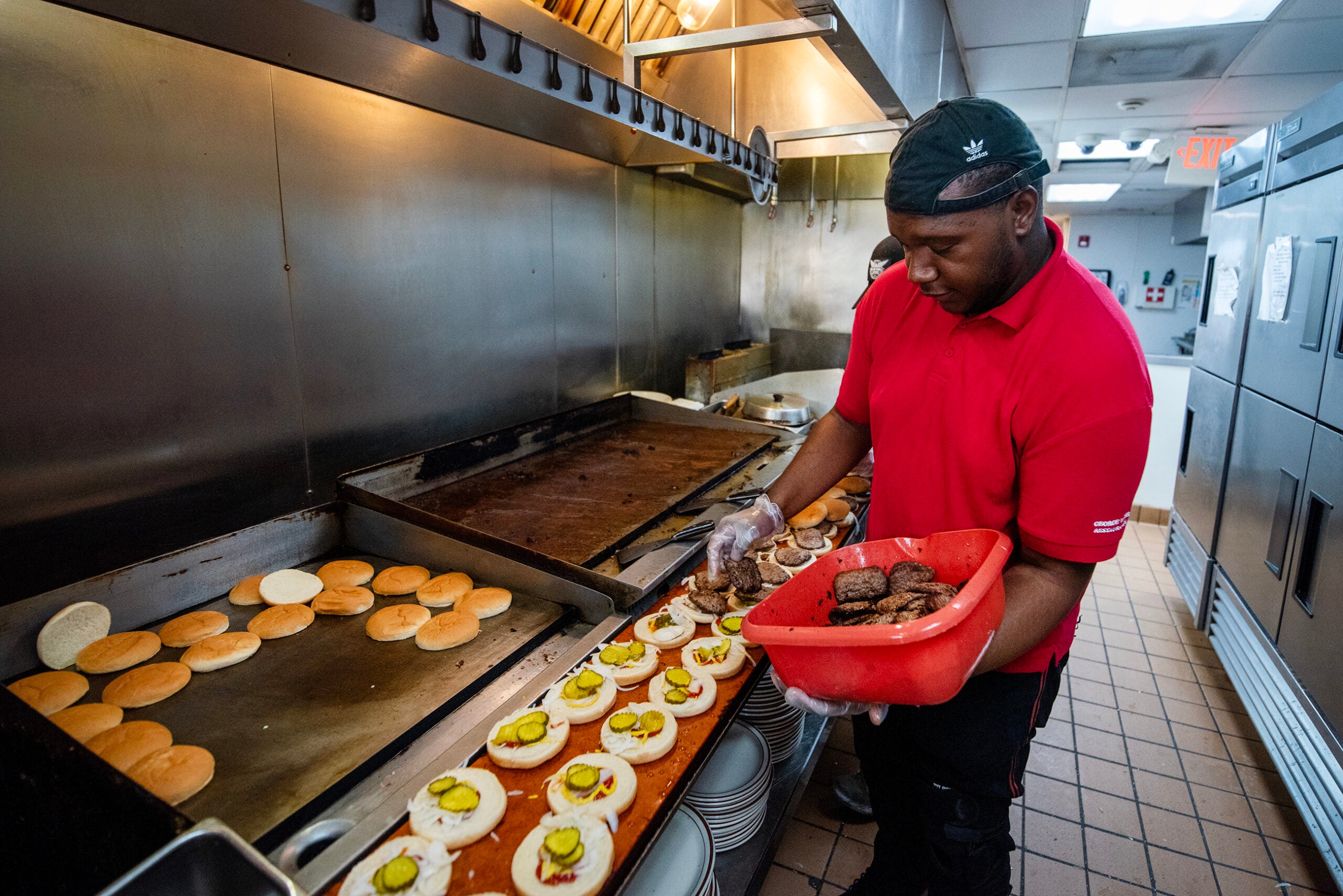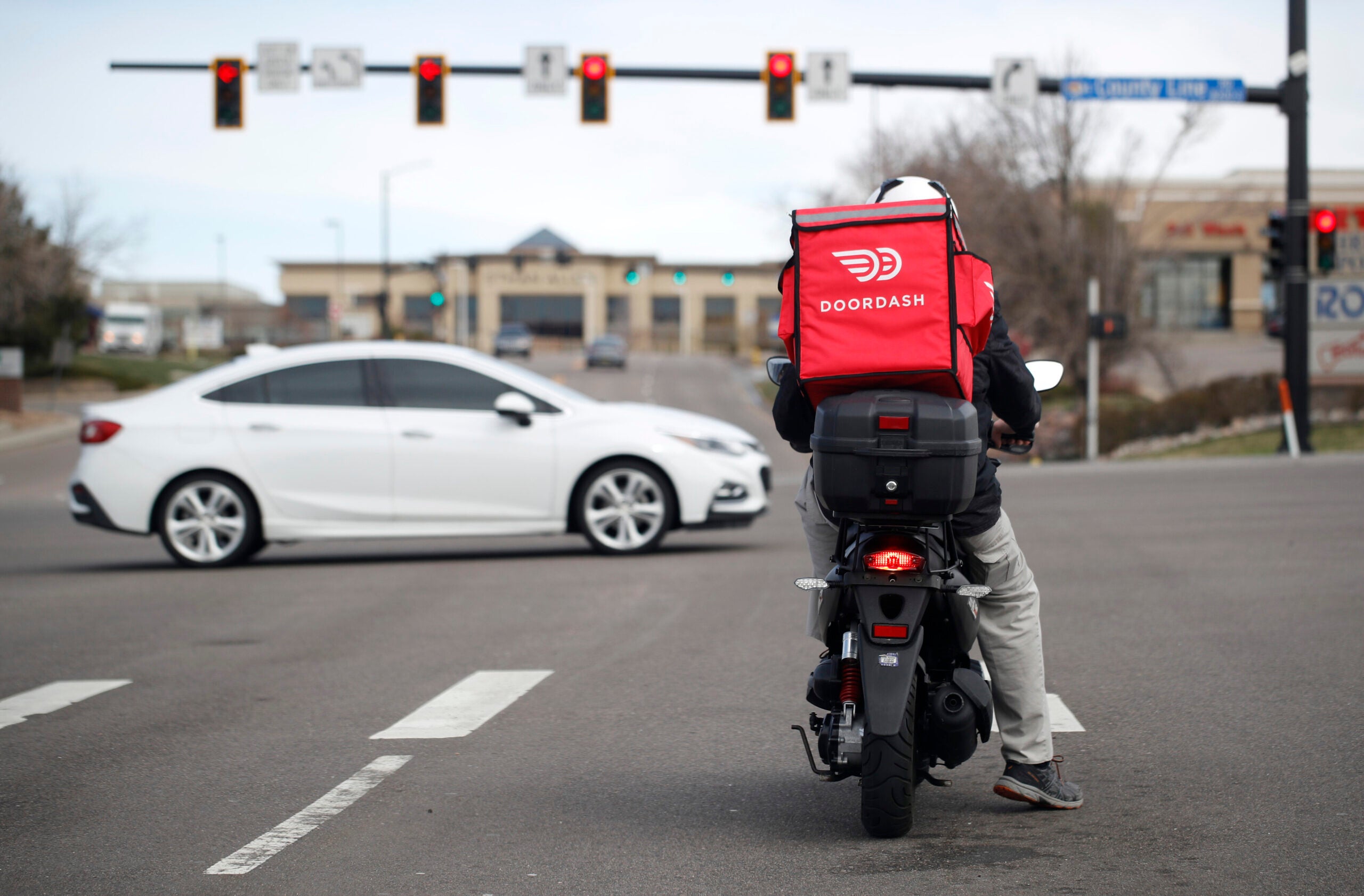Workplace fatalities in Wisconsin have decreased slightly since 2018, but new data may undercount job-related deaths because it doesn’t include people who died after being exposed to COVID-19 at work.
That’s according to a new report from the American Federation of Labor and Congress of Industrial Organizations, or AFL-CIO. The report examined health and safety protections for workers in the United States and provided data from every state.
Wisconsin had 105 workplace deaths in 2021, down from 114 in 2018, but the “true impact of COVID-19 infections due to workplace exposures is unknown,” according to the report.
News with a little more humanity
WPR’s “Wisconsin Today” newsletter keeps you connected to the state you love without feeling overwhelmed. No paywall. No agenda. No corporate filter.
“We really have no idea how many workers died from exposure to COVID on the job, or — for that matter — even how many family members may have contracted COVID from family members who contracted (it) on the job,” said Jordan Barab, who served eight years as deputy assistant secretary for the Occupational Safety and Health Administration, or OSHA, under former President Barack Obama.
While the full effects of the pandemic on workplace safety are unclear, the report illustrates national trends like the heightened threat of workplace violence. It also made policy recommendations to address issues highlighted in the report.
Wisconsin workplace fatalities by the numbers
Of Wisconsin’s 2021 workplace deaths, 36 were the result of transportation incidents, 21 from assaults or violence, 18 from contact with objects and equipment, 13 from exposure to harmful materials, 13 from falls and four from fires or explosions.
Stephanie Bloomingdale, president of the Wisconsin AFL-CIO, said despite workplace fatalities decreasing slightly since 2018, even one death is too many.
“Any worker who dies on the job, it’s not only that worker that is affected but his or her entire family,” she said. “That means that there’s a mom no longer sitting at the kitchen table or a dad, a sister, brother, a son or a daughter.”
Bloomingdale said some of the deaths from transportation incidents — which made up 34 percent of all 2021 workplace fatalities in Wisconsin — involved individuals driving a company car. But more commonly they resulted from collisions with construction workers.
“There are far too many accidents and deaths that occur when workers are fixing our roads or doing road work,” she said. “We have inattentive drivers creating accidents and creating deaths.”
Nationally, workplace deaths from violence or assault increased from 705 in 2020 to 761 in 2021, according to the report. Wisconsin, however, saw a decrease in that category from 26 deaths in 2020 to 21 in 2021.
However, violence or assault was the fourth-leading cause of workplace fatalities nationally, and the second-leading cause in Wisconsin. The report said workplace violence is “a growing and serious threat,” especially for female workers and individuals employed in health care and social services.
“The idea that a worker would go to work and be killed either by guns or other kinds of violence is not tolerable in our state or in our country,” Bloomingdale said.
Out of all 50 states, Wisconsin ranked 24th for fatalities with a rate of 3.4 deaths per 100,000 workers, slightly below the national average of 3.6 deaths per 100,000 workers, the report noted.
Bloomingdale said that ranking means there’s still work to be done because “being middle of the road” isn’t good enough.
“We would like to be the state in the country that has the least fatalities and the least injuries on the job,” she said. “We will not stop advocating for safe workplaces until we are there.”
OSHA faces hurdles in addressing workplace safety
To address workplace safety and reduce deaths on the job, the AFL-CIO report said the federal government needs to give OSHA more resources.
Currently, the report said OSHA is underfunded, understaffed and its penalties for safety violations are too weak.
According to the AFL-CIO, the federal agency only has enough staff to inspect workplaces once every 190 years.
“We simply have not funded OSHA at the levels that it needs to be funded in order to put controls on safety in the workplaces,” Bloomingdale said.
Barab agreed, saying OSHA is a small agency with an “enormous mandate” of ensuring the health and safety of private sector workers across the country. He said OSHA’s only meaningful budget increase in the last 20 years came in 2010.
“Inflation has, of course, gone up and worker salaries have gone up, which effectively means that the budget for OSHA has been cut in real dollars,” he said. “And it got worse during the Trump administration. Not only were there no significant increases in OSHA’s budget, but Trump actually cut parts of it down.”
In 2022, the average financial penalty for a serious federal OSHA violation was $4,354, and the average penalty for a workplace death was $12,063, the AFL-CIO report said.
Barab said those penalties aren’t enough to dissuade bad behavior for big companies.
He referenced a 2014 incident in which a toxic gas release killed four workers at a DuPont chemical plant in Texas. OSHA fined DuPont $99,000, which was later raised to $106,375. Last month, the Environmental Protection Agency, or EPA, announced $12 million in fines against company for the 2014 incident. Dupont is also required to make an additional $4 million community service payment to the National Fish and Wildlife Foundation.
Barab said DuPont’s fines for environmental violations were higher than its fine for violating workplace safety regulations.
“OSHA’s penalty was for killing workers. EPA’s penalty was basically for endangering birds and fish,” Barab said. “What you have here is a country, a legal process and a regulatory process that values birds and fish much more than it values human lives.”
Wisconsin Public Radio, © Copyright 2026, Board of Regents of the University of Wisconsin System and Wisconsin Educational Communications Board.





